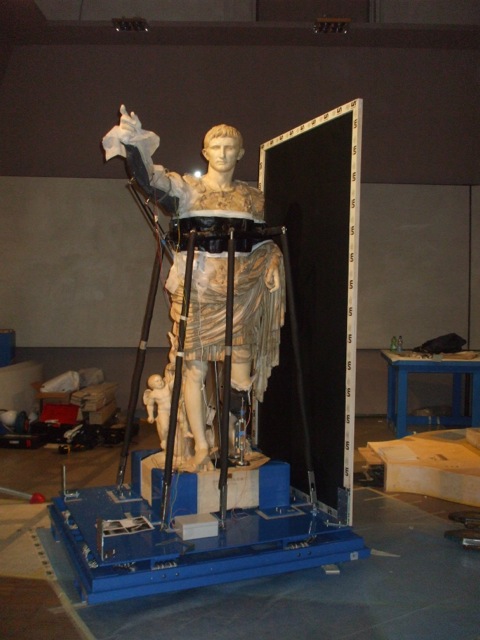A Novel Shockproof System: The joint effort by Enea and the Vatican Museums
30/1/2015

ENEA, in collaboration with the Vatican Museums, has designed and developed an innovative shockproof system, protecting vulnerable works of art and keeping them safe and secure during transportation
The famous marble statue of the emperor “Augustus of Prima Porta” has been transported perfectly intact from the place where it was discovered (Rome’s Prima Porta area) in 1863 back to the Vatican Museum, after being exposed at Scuderie del Quirinale (Rome) and at Grand Palais (Paris).
 Due to its fragile nature, the statue has always been transported using an innovative shockproof system built by Montenovi, and designed and developed by ENEA in collaboration with the Vatican Museums. The technological solutions have been studied and realized by Gerardo De Canio, researcher engineer from ENEA, and technicians from the Vatican Museums: Guy Devreux and Stefano Spada, restorers from the Marble Restoration Laboratory, and Prof. Ulderico Santamaria, Head of the Diagnostics for Conservation and Restoration Laboratory.
Due to its fragile nature, the statue has always been transported using an innovative shockproof system built by Montenovi, and designed and developed by ENEA in collaboration with the Vatican Museums. The technological solutions have been studied and realized by Gerardo De Canio, researcher engineer from ENEA, and technicians from the Vatican Museums: Guy Devreux and Stefano Spada, restorers from the Marble Restoration Laboratory, and Prof. Ulderico Santamaria, Head of the Diagnostics for Conservation and Restoration Laboratory.
The transport has been very complex: with its 2m height and 1000 kg weight, restored in a number of points, the statue is very vulnerable to shocks and stress. An integrated system was developed including a number of technical solutions which allowed to safely protect it during transport: a guardian for the arm, a shock-absorbing coating and an anti-vibration steel cage. The statue was first equipped with a guardian for the arm and a special protecting corsage for the chest, fixed to the basement by a supporting structure. The statue was then placed into a wooden box with an anti-shock coating in it, which in turn was put into an anti-vibration steel cage. All operations were monitored by means of a system of sensors located on the critical points of both the statue and the basement.
This is a kick-off experience allowing ENEA and the Vatican Museums to define new guidelines and protocols for handling and transporting highly vulnerable works of art.
This new collaboration adds up to an existing technical and scientific agreement between these two institutions for the joint development of advanced technologies for cultural heritage conservation. Actually, the latter is crucial to Italy’s national identity and an instrument for its potential economic development, thanks to the great capability of transferring know-how to meet the specific needs of experts in this sector.
For more information on the shockproof system
Source: Gerardo De Canio, ENEA, gerardo.decanio@enea.it
